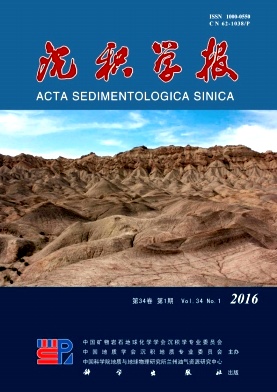The Bimodal Distributions of n-alkanes in the Post-mature Marine Source Rocks and Solid Bitumen from the Northern Guizhou Depression
doi: 10.14027/j.cnki.cjxb.2016.01.017
- Received Date: 2015-01-12
- Rev Recd Date: 2015-06-11
- Publish Date: 2016-02-10
-
Key words:
- post-mature source rocks /
- solid bitumen /
- normal alkanes /
- bimodal distribution /
- northern Guizhou depression
Abstract: The distributions and compositions of normal alkanes were analyzed in the Precambrian- Lower Paleozoic post-mature marine source rocks from seven outcrop sections and two drilling sections and solid bitumen from Yankong paleo-reservoir in the northern Guizhou depression. It was found that the bimodal distributions of normal alkanes are very common, and nC17 and nC25 is main peak for the former and later peak groups, respectively. However, no odd or even carbon predominance can be observed in every peak group. This phenomenon occurs also in the similar post-mature geological samples from other areas and the products of thermal simulation from the Proterozoic source rocks. Therefore, the bimodal distributions of n-alkanes should be an objective geochemical phenomenon in the related post-mature source rocks. Two parameters such as FCPR and LCPR can be used to describe the distributions of normal alkanes in these source rocks and solid bitumen. When they are more than 1.0, normal alkanes have a bimodal distribution. Considering that these geological samples are very old, in which sedimentary organic matter should be mainly derived from various algae and bacteria rich in hydrogen and long chain aliphatic structures, they are an important sources of long chain alkanes in these related source rocks. In addition, Organic matter in a geological sample exists in very complicate and diverse forms such as free and bound, differential maturation for these different organic matter will occur. At this time, the mixture of normal alkanes derived from different organic matter may happen and result in the bimodal distribution of normal alkanes. Therefore, it may be used as a potential indicator to indicate strongly thermal maturation for organic matter from lower organisms such as algae.
| Citation: | BAO JianPing, SI ChunSong, JIANG XingChao, ZHANG RunHe, ZHU CuiShan, HUANG Ling, MA LiQiao, WANG PengWan. The Bimodal Distributions of n-alkanes in the Post-mature Marine Source Rocks and Solid Bitumen from the Northern Guizhou Depression[J]. Acta Sedimentologica Sinica, 2016, 34(1): 181-190. doi: 10.14027/j.cnki.cjxb.2016.01.017 |






 DownLoad:
DownLoad: